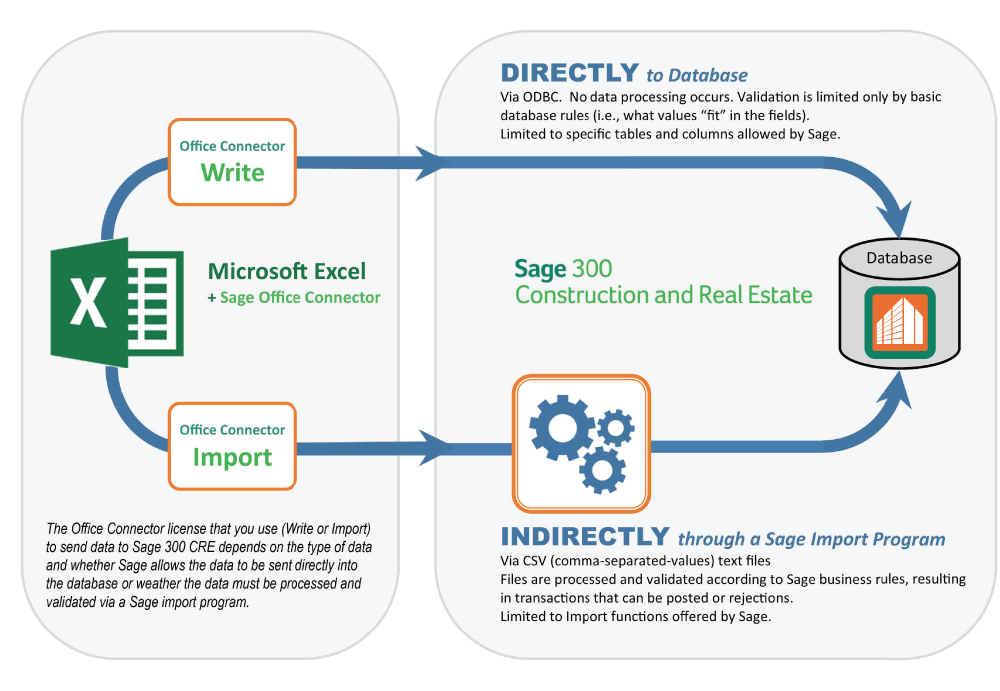Overview
The Office Connector license that you use (Write or Import) to send data from Excel into Sage 300 CRE depends on the type of data and whether Sage allows that type of data to be sent directly into the database or whether the data must be processed and validated via a Sage import program. Office Connector Write supports DIRECT writing and Office Connector Import supports the INDIRECT option using text file import functions of Sage 300 CRE.

Click here for information about which Office Connector module (Write or Import) to use for specific data.
Right Tool for the Job
Choose the right tool based the type of data you want to send into Sage and the approach that Sage makes available for that type of data.
Generally used with master-file setup-related records, or static non-financial values.
- Uses Sage ODBC Driver to write data directly to the Sage database
- Creation of new records is restricted to specific tables that Sage has enabled
- Updating of existing records is restricted to specific tables and columns that Sage has enabled for writing
- Permission is controlled by application and file-type within Sage Security Administration under
ODBC
Learn More
Generally used for transactional data
- Uses Sage Import programs to read data from formatted text files and then create records in Sage database
- Restricted to the available types of imports offered by Sage 300 CRE
- Permission is controlled by menu security (i.e., access to the import menu items) within Sage
Security Administration
Learn More
Comparison - Safety vs. Flexibility
Although writing data directly to your Sage database can streamline a process and offer more flexibility, importing data more closely emulates the manual workflow of recording transactional data. Hence some data can only be imported because there would be no “safe” means to allow for it to be written directly to the database…
Inbound data is processed by a Sage program in order to automatically create other supporting/related records and/or to populate other fields based on settings and retrieval options.
Typical Import Process
- Generate a formatted text file from Excel using Office Connector Import
- Use the applicable import task in Sage and identify the file to be imported.
- View the import journal produced by the Sage import task and address any rejected records. Correct any issues and re-import the rejected information.
- Post transactions that were created by the import task.